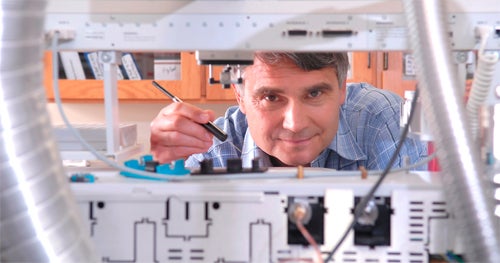
Portable, on-site testing for toxins
Testing for toxins normally involves taking samples to a lab. Chemistry professor Janusz Pawliszyn has developed a portable system that gives immediate results.

Testing for toxins normally involves taking samples to a lab. Chemistry professor Janusz Pawliszyn has developed a portable system that gives immediate results.
By Staff Communications & Public Affairs
When the World Trade Center fell in 2001, investigators needed a way to test for toxins in the air. The work was dangerous, the scene a jigsaw puzzle of chaos. They needed a solution that would give them the data ASAP.
So they turned to system that used solid-phase microextraction (SPME). The technology, invented by Janusz Pawliszyn, a Waterloo analytical chemist, has revolutionized chemical testing.
SPME is widely used in laboratories, but the most exciting application for the technology is found on-site. Rather than collecting samples of air, water, soil, or blood and transporting them back to the lab for analysis, SPME allows samples to be tested where they’re taken.
The result? A sample preparation that produces faster and more reliable data, says Pawliszyn, who holds the Canada Research Chair and NSERC Industrial Chair in new analytical methods and technologies.
To sample environmental toxins or food contaminants, or perform in-vein blood analysis, the tester:
“Research requires an understanding of the depth of the subject and a vision of where analytical chemistry is going,” says Pawliszyn. “You need to try different things and commit time to it.”
Waterloo helps makes that happen.

Read more
Here are the people and events behind some of this year’s most compelling Waterloo stories

Read more
Science students take learning beyond the classroom to drive real-world change

Read more
A winter holiday message from President Vivek Goel
The University of Waterloo acknowledges that much of our work takes place on the traditional territory of the Neutral, Anishinaabeg, and Haudenosaunee peoples. Our main campus is situated on the Haldimand Tract, the land granted to the Six Nations that includes six miles on each side of the Grand River. Our active work toward reconciliation takes place across our campuses through research, learning, teaching, and community building, and is co-ordinated within the Office of Indigenous Relations.